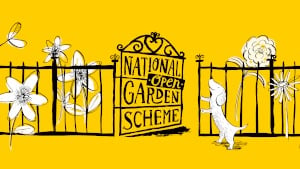About Skipwith Hall
Skipwith Hall started life as a Jacobean farmhouse. It took shape as a Queen Anne manor house for the Parish of Skipwith around 1700, and the mulberry tree in front is likely to have been planted when the upper storey was added during the time of prosperity in the 1770s following the Agricultural Revolution. Skipwith Hall was then the centre of a working estate which included a garden with glasshouses full of well tended fruit trained on ‘hot walls’.
The family of the current owners bought Skipwith in 1898 and moved there in 1929 when Irene Forbes Adam set about a major refashioning of the house and garden. She put in the double beech hedge creating an orchard and kitchen garden in which she installed the Richardson’s greenhouses from Escrick Park. With the help of garden designer Cecil Pinsent she fashioned a garden around the ancient mulberry in front of the house, made the sunken Italian Garden with dry stone walls, and Richard’s Garden was created against the old hot walls in memory of a grandson.
In 1966 her son Nigel took over and started a mini arboretum with many specimen trees. His son Charlie and daughter-in-law Rosalind came to live there in 2002 and invited Miranda Holland-Cooper to re-design the kitchen garden and many of the borders. Her designs included a number of ornate metal structures. The Italian Garden has been restored and Rosalind’s growing interest in gardening for wildlife is reflected in the ongoing management of the garden as a woodmeadow. Species rich grassland is nurtured on the lawns and in the orchard, and the woodland area is managed to maximise the woodland flora. Their landscape architect son Hal Forbes Adam has helped create a new gravel meadow to compliment Cecil Pinsent’s terrace garden in front of the old ‘hot walls’.
Website:
https://www.escrick.com
.jpg)
.jpg)
.jpg)
.jpg)
.jpg)
.jpg)
.jpg)
.jpg)
.jpg)
.jpg)
.jpg)
.jpg)
.jpg)
.jpg)
.jpg)
.jpg)


.jpg)
.jpg)
.jpg)
.jpg)
.jpg)
.jpg)
.jpg)
